Preparing for Travel
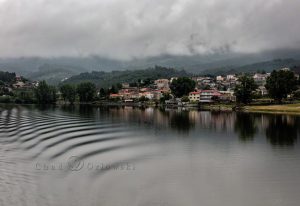 It’s been a while since my last post, and the reasons are myriad. However, photographically I have been active in preparing for my two week trip through Italy–from the north to the south.
It’s been a while since my last post, and the reasons are myriad. However, photographically I have been active in preparing for my two week trip through Italy–from the north to the south.
I have really concentrated on preparing for this shoot (even though it really is a vacation with my wife; more on that later). I have been thinking about equipment, what I want to shoot, scouting out places, and trying to realistically plan on the use of my time (since I will be on a group tour which we all know is probably the worst place to get realistically good photos). This is Growth for me, since I never thought of these elements before.
However, the above impediments have been good in sharpening my senses, judgements, and planning as to how much is realistically possible. That is, do I just want to shoot many photos and hope for the best. Or, do I want to enjoy the time spent in Italy and get a few good to great photos simple because I was perspicacious.
None the less, I did purchase a Platypod Max, since I wanted to have a means to shoot with a tripod without the hassle or inability (to use a tripod) due to local rules in various places. Also, I decided to take more lenses with me, namely, the Canon Ef 50mm 1:1.8 II lens (to use in dark churches,etc.), the Canon 16-35mm 1:4 L IS USM lens (for panos, interior, and some landscape shots), and finally, the Canon EF 24-105 1:4 L IS USM lens (my utility lens for traveling). In addition to these items, I am taking ND filters (10 stop & 15 stop) to try to capture scenes in crowded places (e.g., Venice’s St. Marks Square). Now, this is a lot of equipment for me, but depending on where I’ll be a certain day I’ll just take what I need. The actual amount of equipment will be carried in a LowePro 180 AW bag, which is quite compact. I may switch the bag to a LowPro BP Runner BP 350 AW II Backpack, but I like compact better.
Developmentally, the above captures where I am at photographically. I believe I am growing skill-wise and becoming more efficient in the use of equipment, method, and time. Now all that is left is: will I enjoy my time in Italy while also getting some good shots. That is my goal.
The posted photo is a shot of the journey up the Douro River in Portugal. The journey is a curious one for it entails a forgotten section of Europe, but at the same time, it is a vibrant section based on history, culture, wine-making, and unspoiled landscape (i.e., not commercialized). The particular shot was in early morning with the typical morning overcast skies in Spring. The camera settings: Canon 5 DS, EF24-105mm @ 50mm, f/4 L IS USM, f/8.0, 1/320″, ISO 1250, post processed with DxO 11, Canon Camera Raw, and Color Efex Pro.
Photographic Metanoia
- At July 27, 2018
- By Firstmate
- In Canon EOS 5DS, DxO Optics Pro, Nik Software, Portugal
 0
0
Metanoia is a Greek term meaning the changing of one’s mind, spirt, or heart. In other words, it is an about face in the direction one wants to proceed. My latest excursion (aka vacation) into Portugal was the genesis of this metanoia. The trip itself was disappointing from several aspects, of which I will not go into at this time, but the critical factor as far as photography goes, was that the flow and practics of shooting photography were not easily available or present to have me take a good shot. To be specific, these practics included: many people (literally everywhere all the time), the sense of being rushed, no time to really be in one particular place to become a part of it, being in places in the brightest times of day or having to capture desirable objects from the wrong angle of light or composition, and not having time to reflect on or check one’s camera settings (especially when a transient scene was presenting itself).
Portugal was a beautiful and far less developed or commercialized country, and it had many outstanding vistas and local beauty. But, for the reasons stated above, I regressed in my ability to control not only what I shot but how I shot. I made a serious return to taking blurry or unfocused shots (sometime I was steadily progressing with). That was the most distressing to me, since I was not able to salvage some shots post-processing-wise, since they were blurry.
Consequently, I have arrived at the point in my photography life that I will have to either chuck taking photos on tours and/or develop a shooting strategy more precisely attuned to various situations (this includes my own personal mindset as well as my camera’s settings). Also, I will definitely have to scout out some shots (though, this impossible in most vacation travel, unless I customize the routine), as well as setting up contingency camera settings to fall back on in a hurry. Other than that I will have to steel myself to tune-out distractions as much as possible and also stand still for 2 full seconds whenever I shoot (to eliminate blur/lack of focus).
The posted photo is of a street in Coimbra, Portugal, shot with a Canon 5DS, EF24-105mm f/4L IS USM @ 24 mm, f/10, 1/6″, ISO 100, with a B+W polarizer filter, post processed using DxO Optics Pro, Adobe CR, Nik Color Efex Pro and a gradient map in Photoshop. By the way, this posted shot is nothing extraordinary, but it is, at least, presentable. The point of this post is this: I had to work hard to get this shot to this point in post-processing.
Keeping in Shape
- At July 10, 2018
- By Firstmate
- In Canon EOS 5DS, DxO Optics Pro, Milky Way, Nik Software, RI
 0
0
Since coming back from my most recent journey to Portugal and the Douro River Valley, life has presented to me many personal challenges, testing my resolve on a day to day basis. Without going into detail these issues have resolved themselves and approximately a month later I have been able to spend more time on photography.
Portugal had left me disappointed in not only opportunities to captures shots, but also in my photographic technique in shooting. I had regressed in not being atuned to the technical aspects (basic things as aperture, ISO, shutter speed, good posture for sharp photos) and I was lazy in this regard. One could argue that I had other things on my mind, as I had stated in my last post that simply shooting on a regular European tour presents a myriad of challenges not to be taken lightly.
In any event, I knew I had to bone up and get back into photographic shape. I have tried to do this over the last week or so by attempting to photograph Beaver Tail Lighthouse (which was the third established lighthouse of the original 13 Colonies). It sits on an “island” (or peninsula) of Jamestown, RI. Needless to say, it is a remote area sitting far out away from the mainland and presenting an atmosphere where one feels attuned to the ocean, sky and elements. In other words, it is a special place of nature. However, it presents challenges since the lighthouse is quite bright in revolving (approx. 5″ on, 2″ off). Also, there is some light pollution, especially at this time of year (summer) since the Milky Way (my object of focus) sits in the SE sky where some light pollution exists.
I had tried photographing the lighthouse in the past and was disappointed since the light was too bright. I quickly realized I had to modify my technique. I had been strategizing on this over the last few months, and finally decided that I needed to just go out and shoot the dame thing. I did so the other night under conditions which I thought were perfect. The previous night I attempted to do this but the bugs of summer (July) were a bit much. So, the following night I put on my hiking bug resistant clothes and bug spray and tried again. It was quite a change since there was a stiffer breeze, clear skies, and moderate temperatures, so an enjoyable evening c. 11 PM presented itself to me.
It became apparent to me that I had to improvise on the basic procedure of shooting the Milky Way (I felt I understood the basic technique after shooting Kilauea Volcano in Hawaii at midnight last year). I used two techniques: 1. that proposed by Starry Landscape Stacker, and 2. the basic starry night technique (c.25-30″ exposure, f/2.8. ISO 3200) but this time placing my hat on the lens when the lighthouse light turned towards me (c.2″). Both of these techniques had produced acceptable photos. I then tried using SLSS to process the “hat technique”, and the results were also acceptable.
My gut told me, though, that I should simply use the basic technique, and that is what the current post is. That is, the shot was taken with a Canon 5DS, EF16-35mm f/2.8L USM @ 23mm, f/2.8, 15″, ISO 3200, post processed with Adobe Camera Raw, DxO Optics Pro 11, Nik Color Efex Pro.
Real Europe a la Tourist (more or less)
- At June 25, 2018
- By Firstmate
- In Canon EOS 5DS, Photographic Style, Portugal
 0
0
Finally, after a couple of months of inactivity, the Blog has an entry. As usual, there are reasons for this, especially the spring season where work around the house dominates, and then the arrival of the annual tour to Europe begins. This year the tour was to Portugal, up the Douro River Valley with Viking River Cruises, which happened during the last week of May and the first week of June.
Oddly, the Spiritual Energies were not with me on the Portugal excursion. I tried to make the most of it but came to the realization that “shooting” as it is know among dedicated photographers is not the same as “shooting” while on a guided European tour. First of all, there is no tripod (meaning a lack of some kind of sharpness in details), then there is the obvious time of day that tours take place (in bright morning or afternoon light), then there is the pressure of have myriads of people (literally) around you that are interjecting themselves into your photo attempts. All of this is not to dismiss the really hard task of taking a photo if all of these elements were not there to begin with. This background had a serious creep into my subconscious predisposing me to a less than creative spirit of discovering the wonders that the scene presented that was before me. The foregoing is my subjective disposition to shooting photographically. How I meet those challenges, ultimately, determines if I take a great photo.
I fought the good fight, and came to the conclusion that despite the limitation that tourist group photography has, that Portugal was a unique place, especially in regard to the rest of Europe. What Portugal still had in its favor was that it was authentic! It had commercialization but it seemed to reluctantly accept this, and favored the more true, rural, and individually developed traditions/customs/foods/ways of life that it wanted. That was refreshing!
This last fact became apparent when on a so-called tasting tour in Lisbon. I did not expect much, but I was more than pleasantly surprised that behind what appeared to be ordinary store facades there were quite sophisticated establishments. The above photo tries to capture this fact, since within its apparent humble exterior this wine bar was exceptional in how it presented wines and other Portuguese delicacies. I applaud this Portuguese spirit!.
Such was my general impression of Portugal— it was one of humble presentation which morphed into a true display of taste and style which would equal that of more refined European establishments.
The first posted photo above was shot with a Canon 5 DS, EF24-105mm f/4L IS USM @ 24mm, f/9, 1/125″, ISO 1600, using a B+W Polarizer, and post processed with DxO Optics Pro 11, Adobe Camera Raw, and Nik Color Efex Pro. The second posted photo was taken with a Canon 5 DS, EF24-105mm f/4L IS USM @ 28mm, f/9, 1/800″, ISO 1600, using a B+W Polarizer, and post processed with DxO Optics Pro 11, Adobe Camera Raw, and Nik Color Efex Pro.
Scouting…
- At April 19, 2018
- By Firstmate
- In Canon EOS 5DS, DxO Optics Pro, Nik Software, RI
 0
0
The other day (mid-April) I decided to further refine my photo skills by doing some scouting for future photo adventures. I did this rarely in the past but have come to see that it is an essential part of setting oneself up for successful photographic shots. [I am trying to develop this skill.]
I ventured to Beavertail, RI which sits on the very tip of the Jamestown Island at the mouth to Narragansett Bay. It is a dramatic location since it gets the full brunt of the forces of nature (wind, waves, and climatic extremes). It is the location of the Beavertail Lighthouse, which was the third lighthouse established by the 13 Colonies in the 18th Century, being known then as the Newport Light.
I have often visited this spot over the last 30+ years for in an odd way it is quite meditative. One of my physicians who has photography as a hobby had taken a photo of this lighthouse many years ago in a winter snow blizzard. It is one shot I would like to have had a chance to take. As it goes, the location presents opportunity for many great shots, but the challenge is to meld the elements with the lighting conditions which the landscape presents.
I had taken several successful shots over recent years at this location but one type of shot has been eluding me, namely that of the Galactic Core of the Milky Way with the Beavertail Lighthouse in the foreground. The problem is that the Galactic Core requires a long exposure of 25-30 seconds but in doing so the light of the Lighthouse renders this impossible. I naturally would have to take a shot of the lighthouse in good lighting and meld this with the Galactic Core. But, the crux becomes how best to take the shot of the lighthouse to properly blend the lighting conditions with that of the dark night sky. My latest solution is to try to use a neutral density filter near sunset to approximate the light that may occur at a darker hour when the Galactic Core is captured. Stay tuned.
The current photo is a gratuitous one for while I was scouting Beavertail in weather condition which were not friendly (temperatures in the lower forties with 20 mph winds) a gull appeared just in front on me (4-5 feet away probably thinking I would have a slight morsel for it). I took several shots to capture the capriciousness of nature’s elements and life forces. The photo was taken with a Canon 5 DS, EF16-35mm f/4L IS USM @35mm, f/4.0, 1/500″, ISO 100, post-processed with DxO Optics Pro 11, ACR, & Nik Color Efex Pro.
Finessing as in Baseball
- At April 06, 2018
- By Firstmate
- In Canon 30D, DxO Optics Pro, France, Lumenzia, Nik Software
 0
0
It’s been a short hiatus in writing to this blog, but it was a productive period beyond what is visible in this media. That is, I have been involved in the real chores of life, as in taking care of our house that Spring has come. That means cleaning, maintenance and refreshing what nature has a way of reducing to the common elements of life. In other words, the chores of life have taken precedent to this Blog.
That does not mean that nothing has been occurring within this photographic soul, just that it has not been communicated.
My main energy has been to try to master Greg Benz’s wonderful Photoshop Extension, Lumenzia. I have found this task challenging, since the extension encompasses many of Photoshop’s most complex features. That means I have to understand the Photoshop feature before I understand Greg’s use of it in Lumensia. That is okay. But, it still is time consuming and challenging to a degree which tests the limits of my skills. However, I am proceeding, but at a reduced rate of accomplishment.
Be that as it may, I offer the currently posted photo of my use of Greg’s Lumensia in a shot of Monet’s Garden in Giverny, France as seen through his house window. The story behind this shot is that it should never have occurred. That is, I was prohibited from taking any photographic shot within the house; I did not realize this; and seconds later was abruptly notified of this fact by an attendant (who obviously was not that attendant).
The photo was taken with a Canon 30D, EF24-105mm f/4L IS USM @ 24mm, f/22, 1/125, 1250 ISO, post processing with DxO OpticsPro 11, Lumenzia, & Color Efex Pro.
[By the way, the title to this post is explained thusly, baseball is the sport of spring and summer, which it currently is. And, baseball being a game of finesse, is placing the little ball just rightly, and hitting it just rightly. Such are the similarities between baseball and photography, since one must get the the shot captured just right, as far as timing, aperture, sensory speed, and composition.]
Rediscovering Lumenzia
- At March 15, 2018
- By Firstmate
- In Canon EOS 5DS, DxO Optics Pro, Lumenzia, Nik Software
 0
0
The spirit of creativity moves in mysterious ways, and it stimulated my soul quite unconsciously, but nevertheless emphatically, to focus once again on luminosity masks. I had discovered the power of luminosity masks in photoshop about two or so years ago, and acquired Greg Benz’s Photoshop Extension, Lumenzia, a year ago. Greg has produced an exceptionally powerful editing program for photoshop that makes the difficult to achieve fairly easy, if one knows what they are doing.
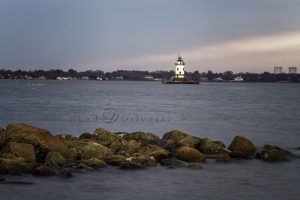 I have found that Greg’s Lumenzia Program is quite extraordinary, not only in what it is able to accomplish regarding luminosity masks, but he is able to apply these in a full spectrum of editing of photo files. Not only that, but he is constantly updating and refining his creative tools.
I have found that Greg’s Lumenzia Program is quite extraordinary, not only in what it is able to accomplish regarding luminosity masks, but he is able to apply these in a full spectrum of editing of photo files. Not only that, but he is constantly updating and refining his creative tools.
Now, I am far from being an ambassador for Lumenzia, but I have to call a spade a spade, and I have used and am beginning to see that what he has created is quite powerful, especially regarding the product cost point.
That being said, I am still in the process of fully trying to utilize the program he has created, but so far believe that I will be using it for some time.
The currently posted photo is of Conimicut Light House in Warwick, RI, being taken in late after noon light in mid January, 2018. It was taken with a Canon 5 DS, f/16, 5.4, ISO 100, EF100-400mm f/4.5-5.6L IS II USM @ 100mm, post processing with DxO Optics Pro 11, Lumenzia, and Color Efex Pro.
The End of Winter
- At February 28, 2018
- By Firstmate
- In Canon EOS 5DS, DxO Optics Pro, Lumenzia, Nik Software, RI
 0
0
Today is February 28th, the so-called last day of meteorological winter. I am happy to see Mr. Winter go, but have mixed feelings this year since it was a time of some photographical productivity. I reached my goal of getting out into the elements and also expanded and experimented with various combinations to make the hard to get shot more easy to get, simply based on practice.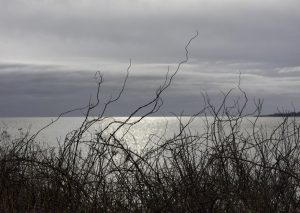
To celebrate this event I am posting a shot of some withered grass and bush on Sachuest Point, RI, which caught my eye in the waning sun on a late winter’s afternoon with storm front clouds moving in. It is quite ordinary, but thought that I could make it extraordinary just to celebrate the moment of beauty.
I used Greg Benz’s Lumenzia extension for Photoshop to craft a luminosity mask to more easily capture the foreground and reduce the water’s glare.
The grasses were shot using a Canon 5 DS, EF100-400mm f/4.5-5.6L IS II USM @ 100mm, f/10, 1/640″, ISO 320, post processed with DxO 11 Optics Pro, Color Efex Pro, and Lumenzia.
Seeking Snowy
This month has been most productive as far as the Muses effecting change in my photographic soul (meaning, orienting and grounding my soul to those things most photographically meaningful). I have used the current ornithology phenomenon of the rare appearance of the Snowy Owl this far south of the Arctic Circle, to be the impetus for me to brave the elements and start honing my skills as a photographer.
The Snowy Owl was first witnessed by me two weeks ago at Sachuest Point, RI. I had missed the most recent invasion of the Snowy Owl this far south two years ago, and I was determined not to miss it again. While I did catch this elusive emigre from the Polar regions when I visited Sachuest Point (a National Wildlife Refuge), this wary bird was perched on a rocky islet about 400 feet offshore, making a photo of any significance moot.
I was finally able to catch this elusive creature further up Narragansett Bay at a small promontory on the western shores of the Bay just south of Providence, where the Save The Bay (nonprofit) property is located.
The encounter of this owl tests the patience of mortal men (probably a survival tactic of the owl) since it literally would sit for an hour at a time in one place. I waited it out and was able to capture the currently posted photos, which in and of themselves are quite ordinary and lacking in sharpness. What the photos are not lacking in is “gesture”, which as Jay Maisel notes is a critical element of any photo worthy of print.
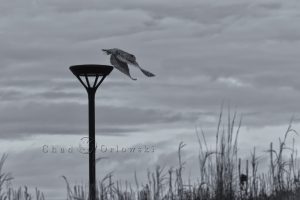 The first photo was taken with a Canon 5 DS, EF100-400mm f/4.5-5.6L IS II USM @ 278mm, f/11, 1/640″, ISO 250, post processed with DxO Optics Pro 11, and Nik Color Efex Pro. The owl was probably just fluffing its feathers after quite a spell of inactivity.
The first photo was taken with a Canon 5 DS, EF100-400mm f/4.5-5.6L IS II USM @ 278mm, f/11, 1/640″, ISO 250, post processed with DxO Optics Pro 11, and Nik Color Efex Pro. The owl was probably just fluffing its feathers after quite a spell of inactivity.
The second photo was taken with a Canon 5 DS, EF100-400mm f/4.5-5.6L IS II USM @ 278mm, f/11, 1/640″, ISO 250, and post processed with DxO Optics Pro 11, and Nik Silver Efex Pro.
Second Best?
- At February 19, 2018
- By Firstmate
- In Canon EOS 5DS, DxO Optics Pro, Nik Software, RI, Sharpness
 0
0
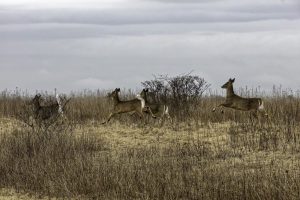 This past winter has cast upon me the challenge to continue my growth by both studying and practicing the art of photography. I have done this with surprising gusto because I did not think it within me. Anyway, I revisited Vincent Versace’s arduous method of producing photographs for “fine art” printing. Vincent’s knowledge of the field has been a guide worthy of a king’s ransom. But, for this poor soul at this stage of my life, I find it far beyond my capabilities and aspirations. However, I have adopted his many insights as an ideal to be aspired to and then use these as a measure to adapt to the current capacities I possess.
This past winter has cast upon me the challenge to continue my growth by both studying and practicing the art of photography. I have done this with surprising gusto because I did not think it within me. Anyway, I revisited Vincent Versace’s arduous method of producing photographs for “fine art” printing. Vincent’s knowledge of the field has been a guide worthy of a king’s ransom. But, for this poor soul at this stage of my life, I find it far beyond my capabilities and aspirations. However, I have adopted his many insights as an ideal to be aspired to and then use these as a measure to adapt to the current capacities I possess.
In counterpoint to Vincent I have also been studying the method of practical photography by Bryan Peterson whom I find as equally adept at creating worthy photographs of the lived world. Bryan’s techniques are capable of being easily utilized in one’s own work flow, at least in actually taking the photograph without any attention to post-processing (in other words, taking a great photo before all else).
This dialectic has left me in the creative tension of trying to choose what best works for me and yet produce the best possible photo I can of a particular situation.
That being said, (i.e., the studying part), I have also met the challenge of getting outside this winter to shoot in conditions with are winter-ish. I must say I am proud of myself, and have actually enjoyed the experience of living on the edge of endurance (a wonderful aside is that it has allowed me to feel completely alive as I used to feel when I was younger and facing the elements).
All of the above leads to the point that I am trying to make. Both of the posted shots are critical existential moments of movement of wild life, i.e, deer running to escape something, and a hawk trying to find a meal. Both of these moments actually occurred in split seconds of the moment, meaning I had to absolutely have the right settings in my camera and the camera had to be responsive to my needs to capture the in-focus, properly framed shot. 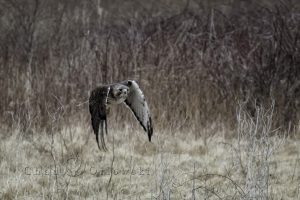
I almost had it! That was my conclusion. Both of the posted shots were hand held and rapidly captured based on subject movement. I thought I was on automatic focus, but there clearly was not a really sharp image captured in both situations. Maybe the subjects were moving too quickly. Maybe not. My point is: You must have responsive equipment based on what you are trying to capture. You must allow for the elements (heat, cold, moisture, fog, light, etc). You have to be ready with your settings based on your anticipated need.
The first photo was taken at Sachuest Point National Wildlife Preserve in Rhode Island at a split second when the deer suddenly appeared. It was taken with a Canon 5 DS, EF100-400mm f/4.5-5.6L IS II USM @ 255mm, f/11, 1/640″, ISO 1000, DxO Optics Pro 11, ACR, Photoshop CC2018.
The second photo is of a Red Tailed Hawk taking off from a field directly in my direction. It was taken with a Canon 5 DS, EF100-400mm f/4.5-5.6L IS II USM @ 400mm, f/11, 1/640″, ISO 2500, post processed with ACR, DxO Optics Pro 11, Color Efex Pro.

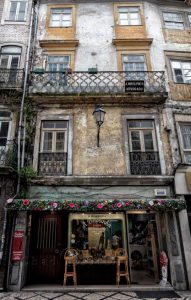
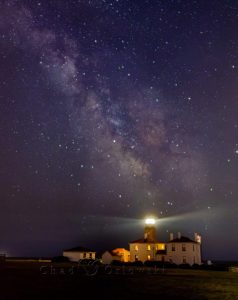
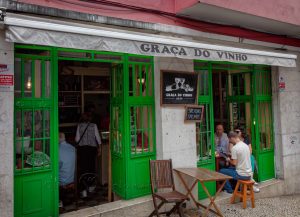
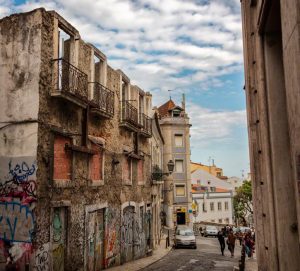

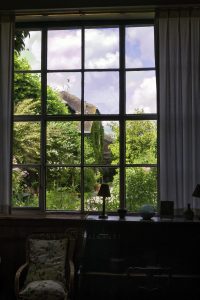
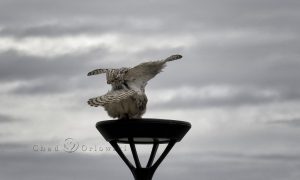
Recent Comments